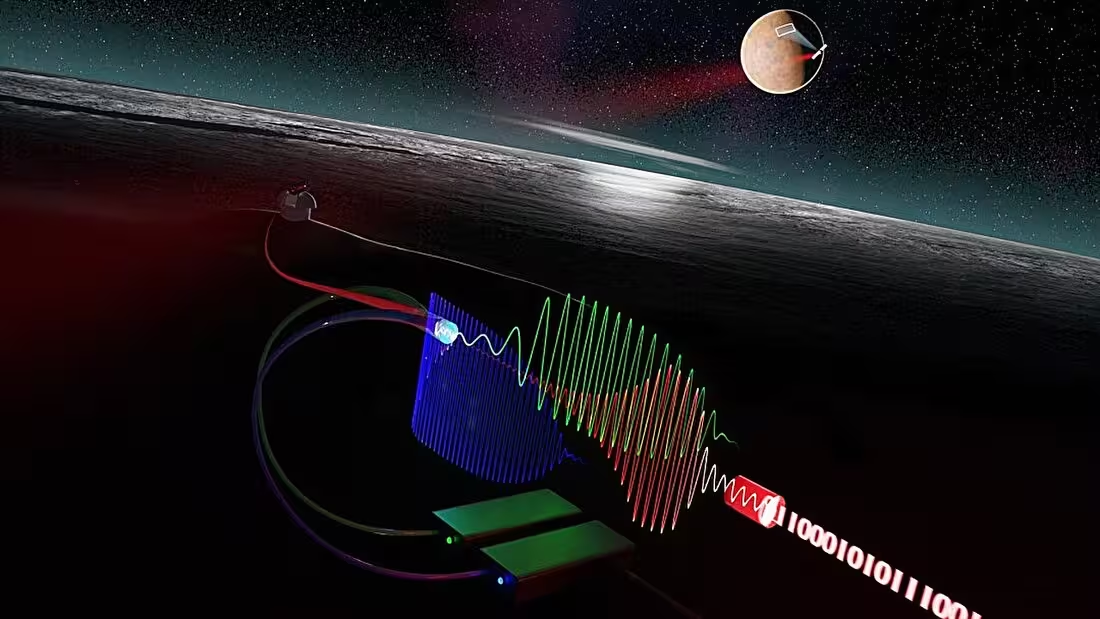A new optical communication system developed by researchers at Chalmers University of Technology in Sweden opens up new possibilities for faster and improved space communications. This system uses ultra-sensitive receivers and amplifiers to transmit images, movies and data from space probes to Earth.
Optical technologies are becoming increasingly popular in space communications systems because they exhibit less signal loss to radio waves during long-distance transmission. But even light loses its strength over long distances, so highly sensitive receivers that can receive significantly weakened signals are needed.
Researchers at Chalmers have created an optical communications system with a more sensitive receiver than previously demonstrated at high transmission speeds. “We can demonstrate a new optical communication system that allows faster and error-free information transfer over very long distances, for example, to transmit high-resolution images or videos from the Moon or Mars to Earth,” says Peter Andrekson, professor of photonics. at Chalmers and one of the lead authors of the study.
The system uses an optical amplifier in the receiver, which amplifies the signal with minimal noise and allows reuse of the information it contains. Previously, the research group had managed to demonstrate a noise-free optical amplifier, but until now it could not be practically used in optical communication lines due to the high requirements for the transmitter and receiver.
In the new system, the researchers engaged the Earth’s receiver for two of the three light frequencies needed to amplify without interference, while the transmitter produced only one frequency. This simplification of the transmitter means that optical transmitters already available on satellites and probes can be used in conjunction with the amplifier in the Earth receiver.
Also read – NASA recorded a powerful explosion from the Sun
“This phase-sensitive optical amplifier produces essentially no additional noise, which helps increase receiver sensitivity and achieve error-free data transmission even at lower signal strength,” says Rasmus Larsson, Chalmers photonics researcher and one of the study’s lead authors. .
The researchers’ progress could help solve the scientific data sharing problem facing space agencies today. “NASA talks about the ‘bottleneck’ in scientific data exchange, where the speed of scientific data collection from space to Earth is the hindering factor in the chain. We believe that our system is an important step towards a practical solution that can eliminate this problem,” says Peter Andrekson.
The next step will be the testing of the optical communication system with integrated amplifiers during field studies on Earth, followed by communication channels between the satellite and the Earth.













